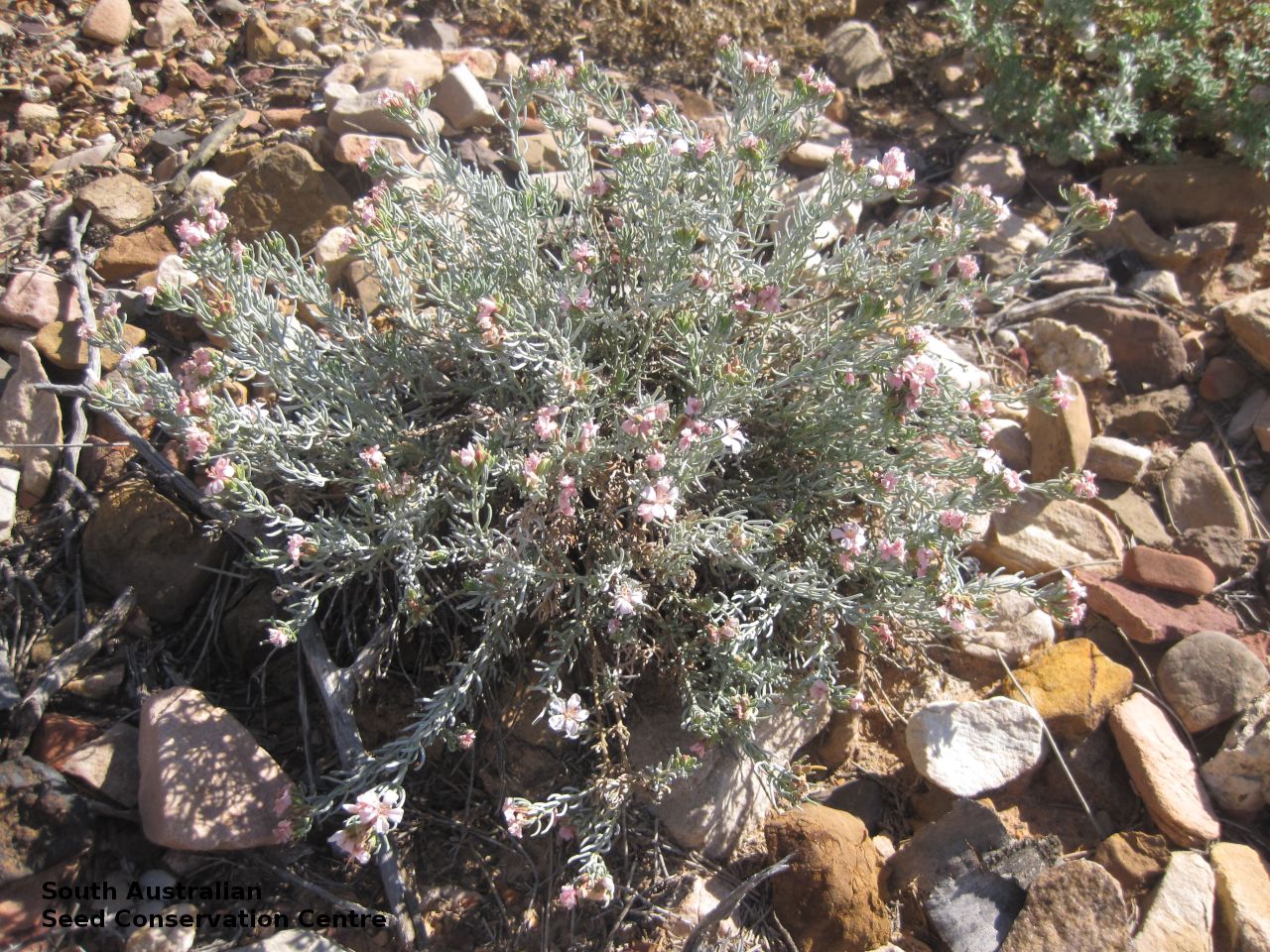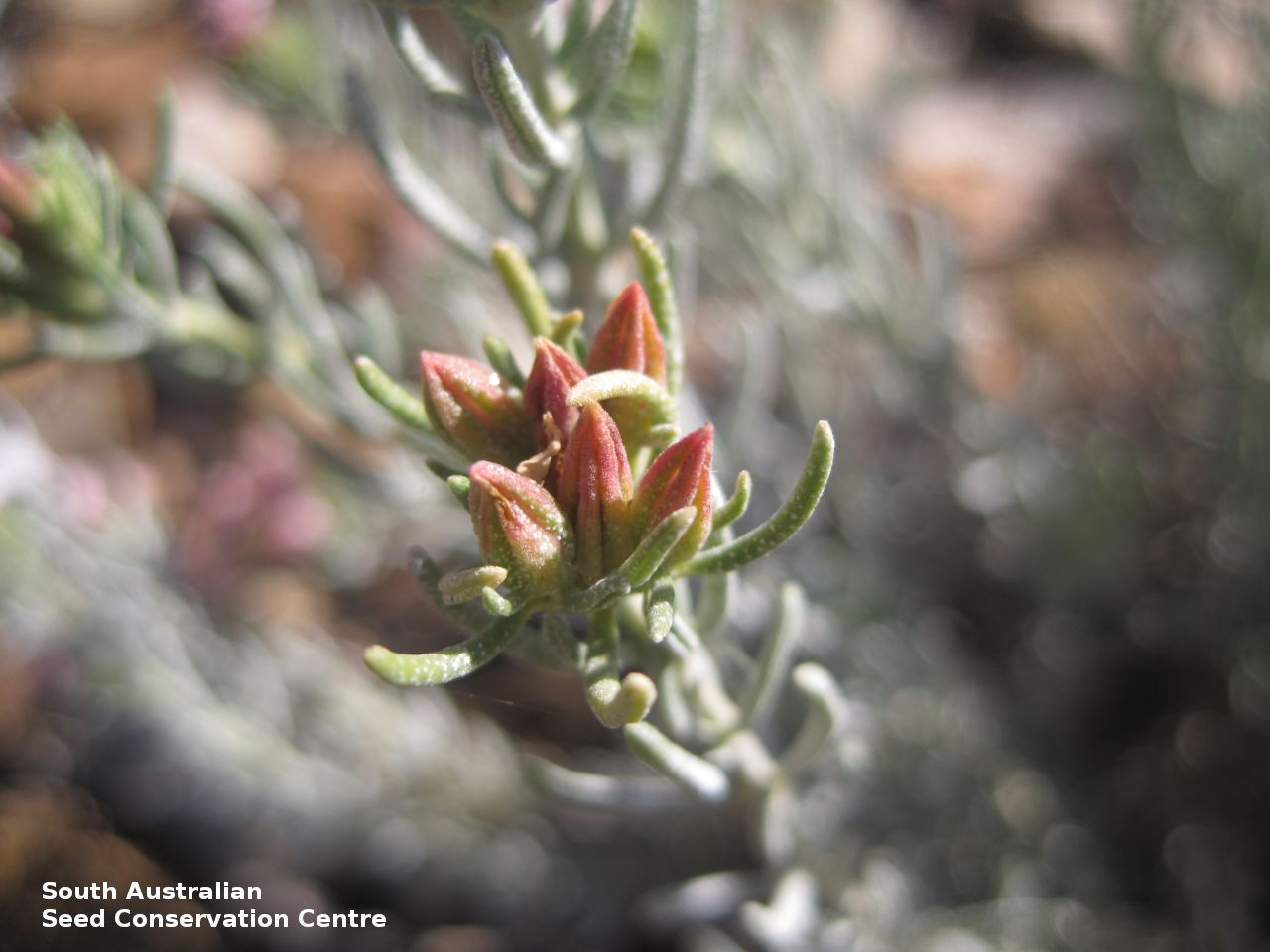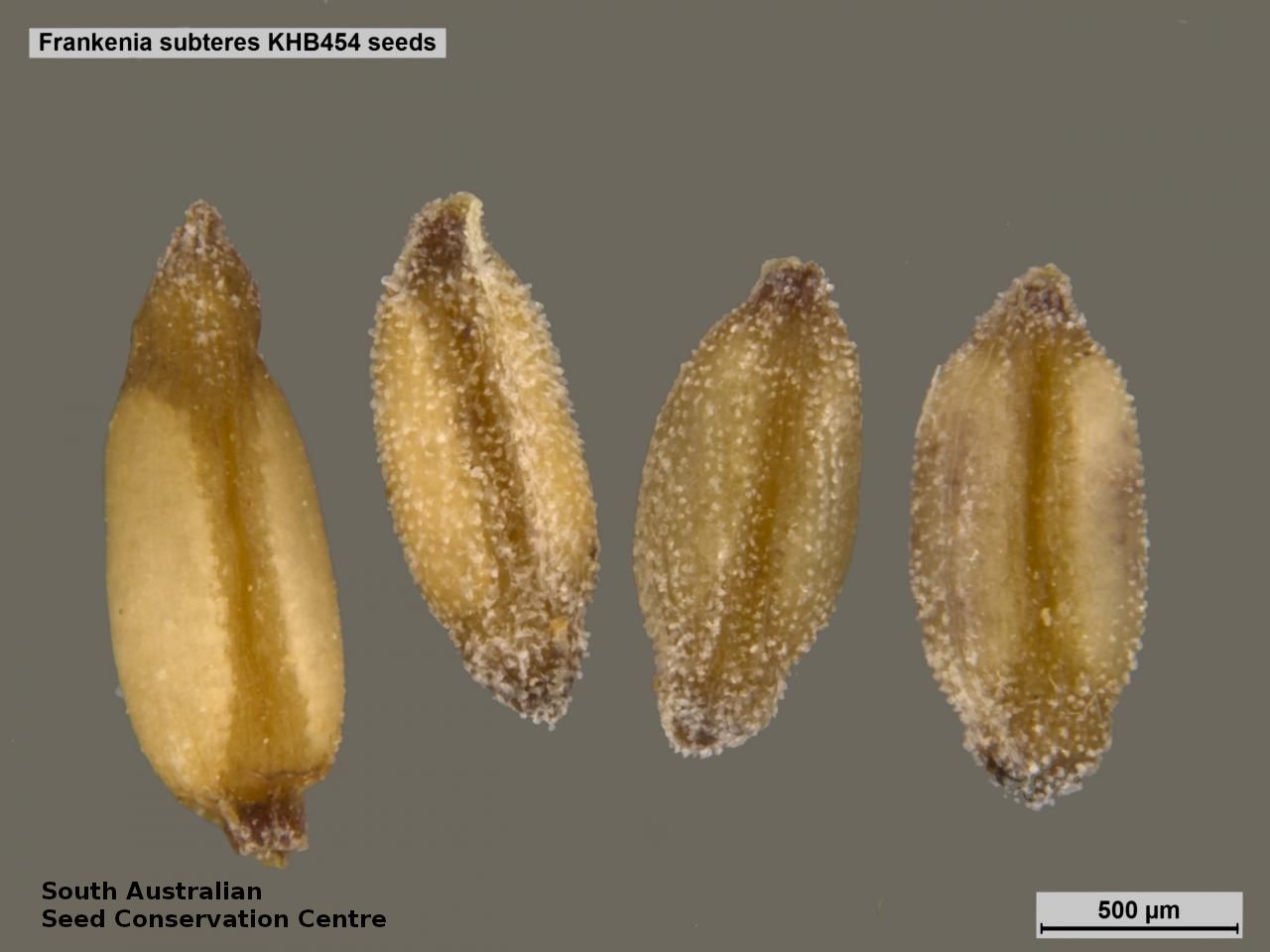







Prior names
Frankenia granulata
Etymology
Frankenia named after Johan Frankenius (1590-1661), a Swedish botanist. Subteres from the Greek 'sub' a prefix meaning partially, almost or somewhat and the Latin 'teres' meaning cylindrical, alluding to plant roundish stems.
Distribution and status
Endemic to South Australia and found in the north-eastern corner, growing in a rocky drainage line. Native. Uncommon in South Australia.
Herbarium regions: Lake Eyre, Flinders Ranges
NRM region: South Australian Arid Lands
AVH map: SA distribution map (external link)
Plant description
Small shrub with branches differentiated into long and short-shoots, hairy; internodes to 18 mm long. Long-shoot leaves to 12.5 mm long; leaf blades narrowly oblong to linear, terete, to 1.5 mm wide; margins strongly thickened, tightly revolute on fresh, dried and boiled material; true abaxial surface reduced to a narrow medial furrow; mid-vein narrow, linear, inconspicuous; surfaces grey-green, adaxial and abaxial surfaces hairy; short-shoot leaves often somewhat shorter than the subtending long-shoot leaves. Flowers borne at the top 1-3 nodes of the upper branches, commonly in clusters with 2-11 pink to white flowers, or solitary. Flowering between September and October. Fruits are brown cylindrical capsule with 1-4 seeds. Seeds are light brown ovoid seed to 1.5 mm long and 0.6 mm wide, with fine tubercules. Seed embryo type is spatulate, fully developed.
Seed collection and propagation
Collect seeds between November and January. Look at the tip of branches for dried flower heads. Collect the heads that are cylindrical, brown, slightly fat at the base. This should contain small ovoid seed. Place the flower heads in a tray and leave to dry for at least a week. Then rub the dried heads gently to dislodge the seeds. Use a fine sieve to separate the seeds from the unwanted material. Be careful as the seeds are very small. Store the seeds with a desiccant such as dried silica beads or dry rice, in an air tight container in a cool and dry place. Seed set can be low but viability is high. From one collection, the seed viability was high, at 90%. Seeds are non-dormant, viable seed should germinate readily.
| Location | No. of seeds (weight grams) | Number of plants | Date collected | Collection number Collection location | Date stored | % Viability | Storage temperature |
|---|---|---|---|---|---|---|---|
| BGA MSB | 16,000 (2.72 g) 16,000 (2.72 g) | 30+ | 14-Dec-2010 | KHB454 Flinders Ranges | 1-Jan-2012 | 90% | +5°C, -18°C |
Number of plants: This is the number of plants from which the seeds were collected.
Collection location: The Herbarium of South Australia's region name.
% Viability: Percentage of filled healthy seeds determined by a cut test or x-ray.